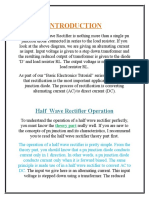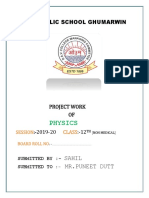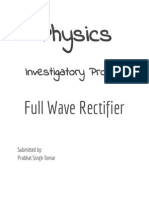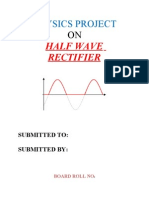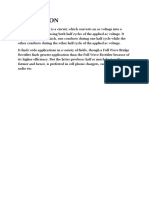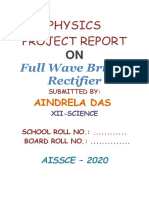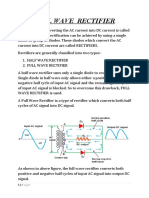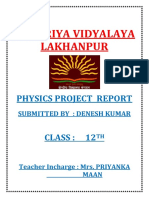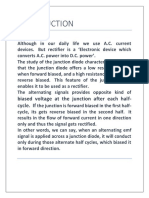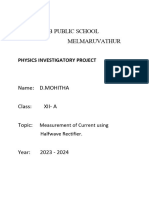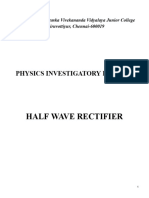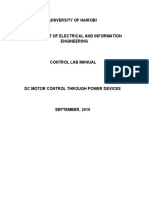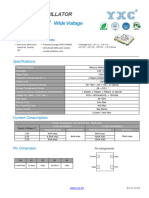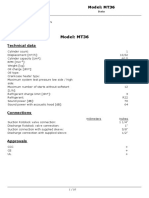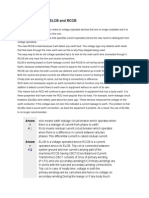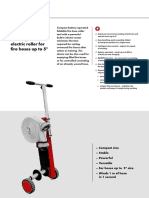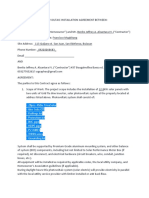82% found this document useful (11 votes)
28K views19 pagesPhysics Project File Class12 Half Wave Rectifier
The document describes a student project on constructing and testing a half-wave rectifier.
1. The student aims to construct a half-wave rectifier and determine the current by measuring the voltage and resistance. A half-wave rectifier uses a diode to convert alternating current into pulsing direct current by only allowing current to flow during one half of the input cycle.
2. The circuit consists of a diode connected in series with the secondary of a transformer and a load resistance. During the half cycle where the diode is forward biased it conducts, and during the reverse biased half cycle it does not, rectifying the current.
3. The output voltage is a series of half-wave pulses that
Uploaded by
ACopyright
© © All Rights Reserved
We take content rights seriously. If you suspect this is your content, claim it here.
Available Formats
Download as PDF, TXT or read online on Scribd
82% found this document useful (11 votes)
28K views19 pagesPhysics Project File Class12 Half Wave Rectifier
The document describes a student project on constructing and testing a half-wave rectifier.
1. The student aims to construct a half-wave rectifier and determine the current by measuring the voltage and resistance. A half-wave rectifier uses a diode to convert alternating current into pulsing direct current by only allowing current to flow during one half of the input cycle.
2. The circuit consists of a diode connected in series with the secondary of a transformer and a load resistance. During the half cycle where the diode is forward biased it conducts, and during the reverse biased half cycle it does not, rectifying the current.
3. The output voltage is a series of half-wave pulses that
Uploaded by
ACopyright
© © All Rights Reserved
We take content rights seriously. If you suspect this is your content, claim it here.
Available Formats
Download as PDF, TXT or read online on Scribd
/ 19



